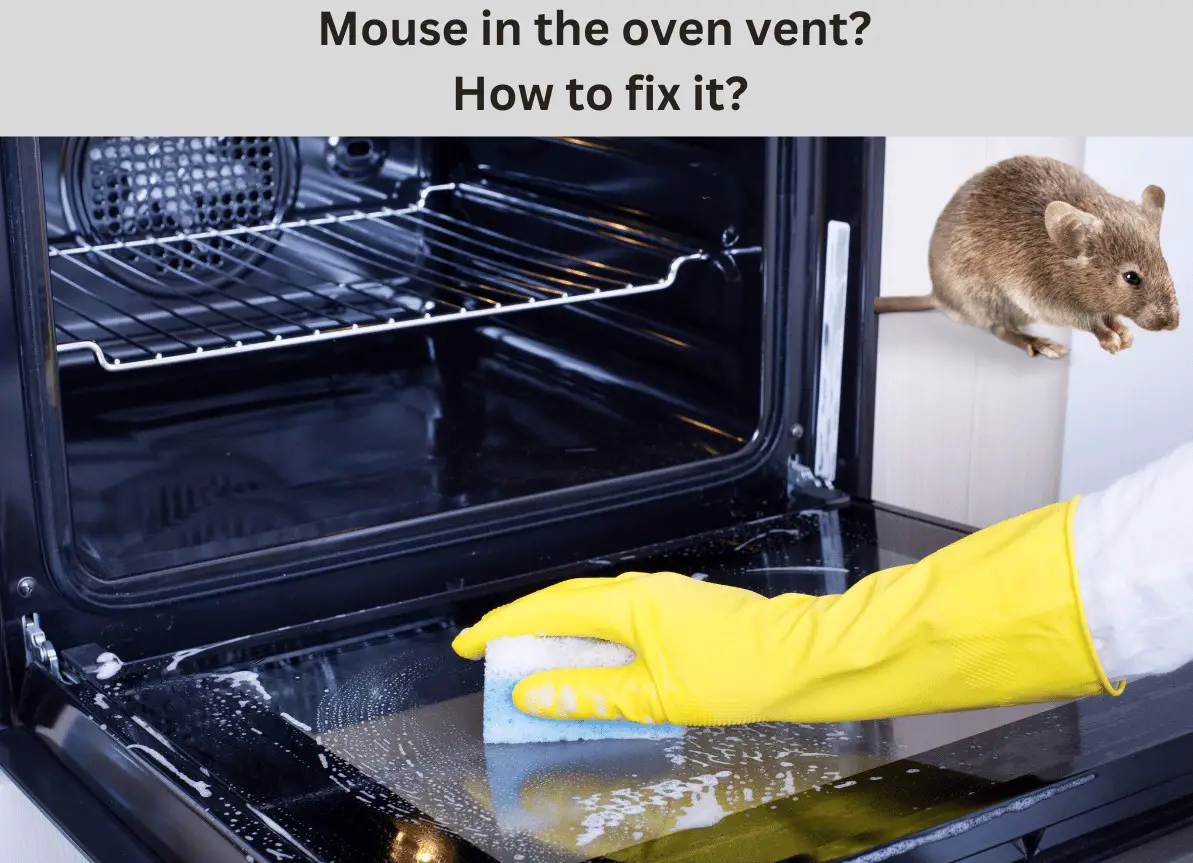Wait; was it a squeak I just heard from my oven vent? Can a mouse enter my oven vent? Absolutely yes! Just like many other animals, mice can live in ovens.
This is because ovens offer warmth, space, and quick access to food particles. And the worst-case scenario is that the oven vent may get blocked!
So, what if there is a mouse in the oven vent? The real problem starts when the mouse chews your oven wiring and tubes. In this blog post, I’ll guide you on how to prevent mice from entering your oven.
I will also discuss the most common reasons why mice enter your oven so that you may take preventive measures before it’s too late.
Let’s begin!
Why does the mouse enter in oven vent?
The most obvious reasons for a mouse in oven vent are warmth and quick access to food. To prevent a mouse from entering your oven, clean it every time you use it and place mouse traps around your oven.
Signs of Mouse in Oven
Do you observe scratching marks on your oven’s body? Even if you don’t, there is a 50% possibility that mice live inside your oven.
There are a few telltale indicators that you’re unknowingly feeding mice inside your oven. Let’s see all the indicators one by one:
Urine smell
Mice create their territory through urination, as their urine bears a very strong smell.
If your oven has suddenly started to create odor, it is because a mouse has found its new home inside your oven.
Footprints
If you observe tiny dusty footprints around your oven, it’s a mouse. Regularly
clean the area around your oven so you may immediately notice their footprints.
Nesting marks
Bread particles, torn paper, and pet food particles with mouse poop are obvious indicators of mouse/mice nesting inside your oven.
Damaged wiring
Mice bear the instinct to bite everything. This is dangerous. Turning on the oven with damaged or broken electric wiring can cause sparks inside your oven.
How to get rid of a mouse in an oven?
Unfortunately, a mouse can enter and live in an oven for months as there is much space for the little creature to hide.
The best way to prevent or eliminate mice in the oven is to discourage them. Here’s a step-by-step guide to solving this issue:
- Mice reproduce comparatively faster than other creatures. Therefore, set traps around your oven.
Set at least one trap outside your kitchen and one near your oven. Alternatively, you can place glue traps for the mouse near the oven. - Another way to discourage mice from entering your oven is to regularly clean the oven from the inside and outside.
Try cleaning the oven every time you use it. Very soon, mice will eventually leave the oven. - In case you find a mouse entering your oven, make them leave the oven by hitting a spoon on your oven. Once the mouse is gone, block the holes with a thick piece of cloth.
- Soak a few cotton balls in peppermint oil and place them outside your kitchen and near the oven.
Mice hate the peppermint smell; therefore, it will prevent them from entering the kitchen.
What if the issue is left unresolved?
You may feel lazy about following the above-mentioned preventive measures, but you’ll no longer procrastinate once you find how dangerous a mouse can be for your health.
Hantavirus is a virus that is found in mouse saliva, urine, and poop. In confined spaces, this virus spreads more rapidly.
By this, you can imagine how much harm mice living inside your oven can cause to you and your family.
Frequently Asked Questions- FAQs
What smell do mice like the most?
Mice love certain odors, which makes setting traps for them easy. Mice are attracted to grains, fruits, butter, peanut, and seeds.
What are the symptoms of Hantavirus sickness?
Fatigue, muscle aches, dizziness, headaches, chills, and fever are early signs of Hantavirus. If the sickness isn’t cured for long, it can cause vomiting, abdominal pain, and diarrhea.
Which smells do mice dislike the most?
There are certain odors that mice hate, and you can use them to keep them at bay. These include cinnamon, peppermint, vinegar, bleach, ammonia, and citronella.
Final Thoughts
In summary, finding a mouse inside your oven is not uncommon, but it is dangerous if you leave this issue unresolved.
Follow the tips and preventives described in this blog post and see the magic happening!







I’ve seen mice go into my oven vent. How do I get them out and keep them out? Can I put cotton balls soaked in peppermint inside of the vent and/or use steel wool to close the length of the vent? What’s safe? What can I do?
Hey there,
Thanks for dropping a question about those pesky mice in your oven vent. It happens to the best of us! Here are a few tips to help you out:
Mice can be pretty sneaky, so grab some steel wool and seal up any openings around the vent. That should stop them from making a cozy home in there.
As for the peppermint trick, it’s not a sure bet, but some folks have had luck with it. Soak some cotton balls in peppermint oil and toss them near the vent. The strong scent might keep the critters at bay. Personally, I tried it once and it worked for me. So, I’d recommend you to give it a try.
To avoid future visits, keep your kitchen tidy, clean up crumbs, and consider traps or professional help if the problem sticks around.
Please let me know if you need to discuss it further.
Cheers,
Eva